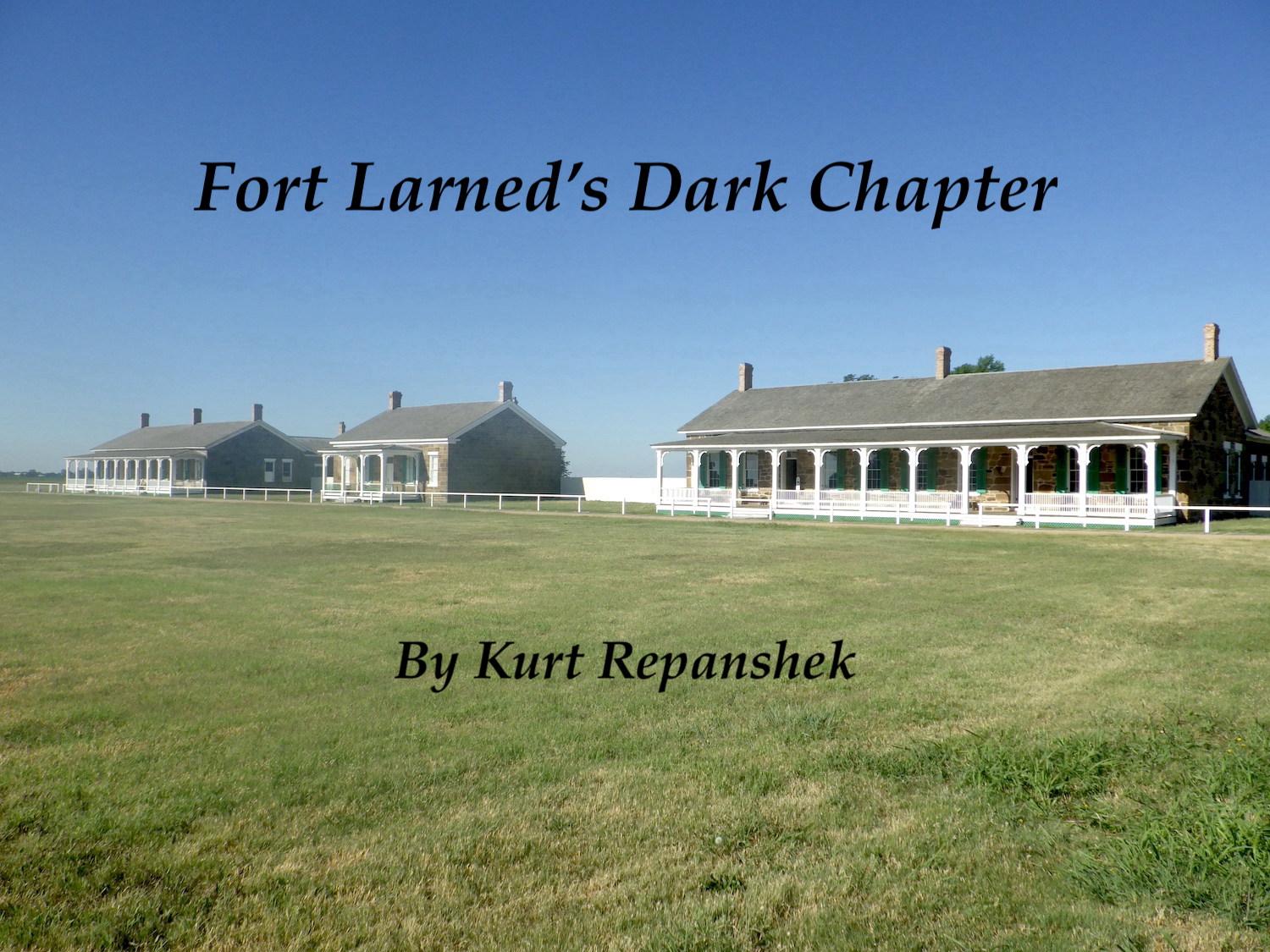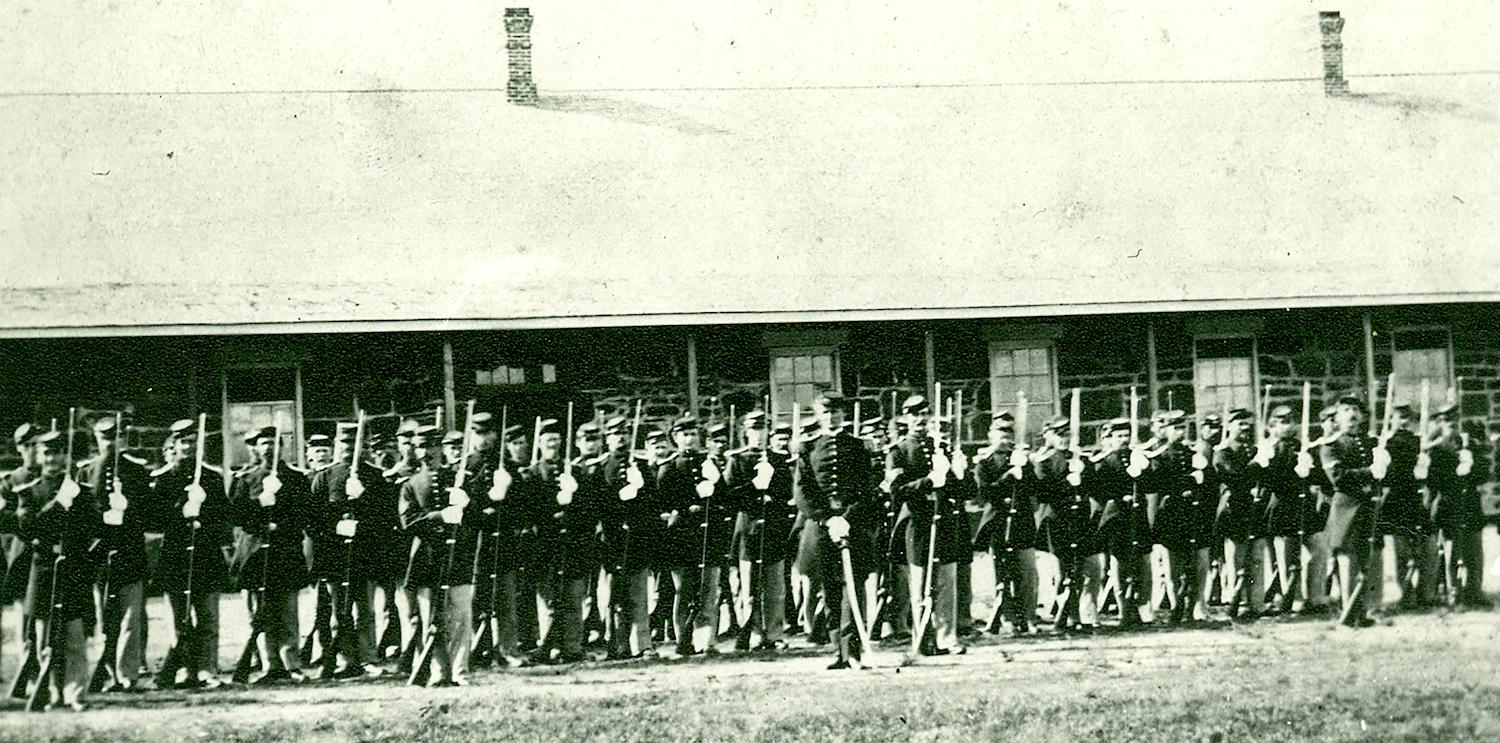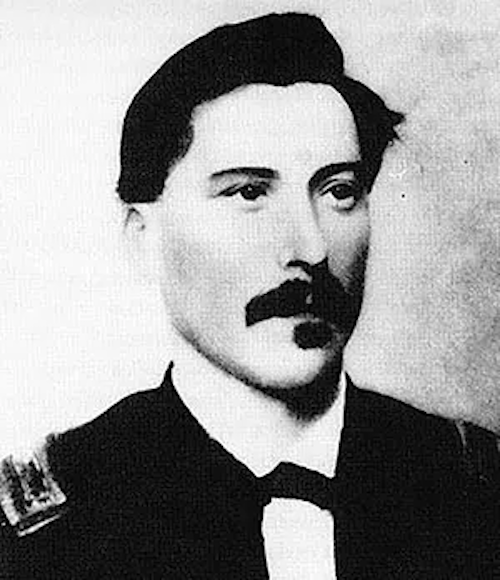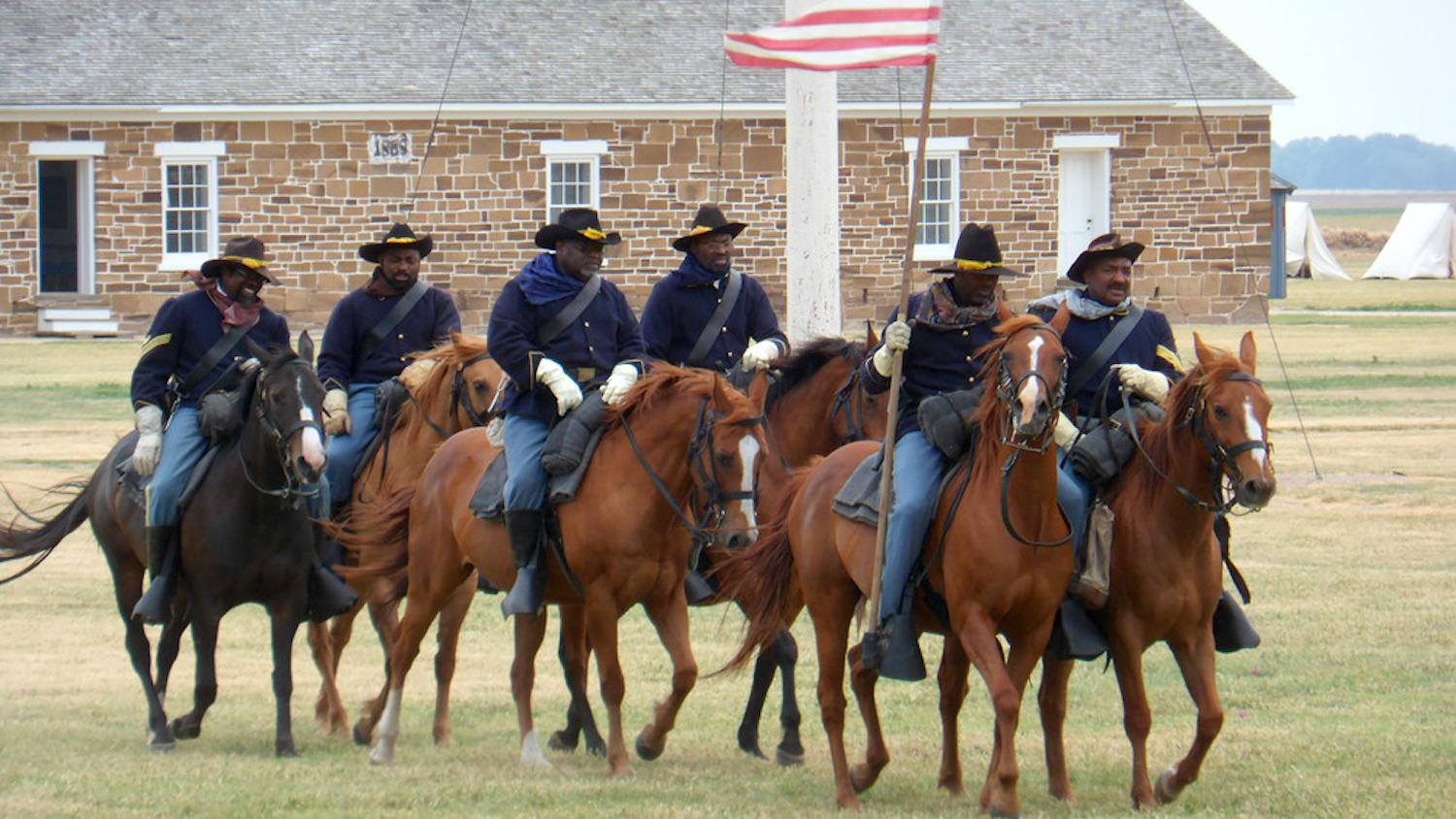
FORT LARNED NATIONAL HISTORIC SITE, Kansas _ A billiards table offering one of the few respites from the daily hardships and boredom endured by soldiers on the frontier in the wake of the Civil War could not temper the racism that some white troops harbored against their Black peers.
A friendly game of billiards at Fort Larned exposed the simmering rift early on January 1, 1869, when a group of white soldiers from Company C of the Third Infantry Regiment entered the sutler's store operated by Tappan and Weichsdbaum and told three Buffalo soldiers from Company A of the Tenth Cavalry to relinquish the table. "We have struck one n----- today!" one of the white soldiers said before they attacked one of the Black soldiers, who drew his service revolver in defense.
The immediate aftermath was that the soldier who drew his revolver -- identified only as Sergeant Taylor -- was placed under arrest and ordered to his quarters even though the post commander didn't investigate the incident, while the rest of Company A was ordered out in the middle of a blizzard to guard the fort's wood pile stacked a half-mile from the fort. None of the white soldiers was punished.
Later on New Year's Day some of the white soldiers, First Sergeant Michael Mahoney and two others, entered the quarters of Eliza Harris, the wife of another Buffalo soldier and a laundress at the fort, and threatened her and Pvt. Charles Henderson, telling them, "I will let you damned n------ know that you can't run this post -- if I can't whip you any other way, I will take my whole company and whip you one at a time."
Early the next day, January 2, the stables that housed the Buffalo soldiers' horses and much of their gear erupted in flames. The stables burned to the ground, killing 41 of 60 horses.
That incident and its curious details from more than 150 years ago is just one of the stories told at Fort Larned, a Civil War-era fort on the Western frontier that arose in 1859 to protect travelers along the Santa Fe Trail as well as the Atchison, Topeka and Santa Fe Railroad from Plains tribes increasingly angry over the loss of their homelands and hunting grounds. In service for less than two decades, the fort's well-preserved stone buildings have endured along with those stories.

Members of Company C of the Third Infantry, pictured here in 1867 in front of their barracks at Fort Larned, were implicated in the burning down of the 10th Cavalry's stables/NPS archives
Buffalo Soldiers And Racism
Black soldiers in the United States date to the Revolutionary War, when Blacks helped in the war for freedom only to find that not all enjoyed freedom after the United States was born. During the Civil War the valor of Black soldiers was praised by officers, including Maj. Gen. James G. Blunt, who after one battle wrote that, "[T]oo much praise cannot be awarded them for their gallantry. The question that Negroes will fight is settled; besides, they make better soldiers in every respect than any troops that I have ever had under my command."
Eighteen Black soldiers were awarded the Medal of Honor for their performance during the Civil War. But such prestige and respect didn't follow them all.
It was shortly after the end of the Civil War, which saw nearly 180,000 Black soldiers fight for the Union, and more than 33,000 die in the process, that Congress passed legislation to create two Black cavalry units, the Ninth and Tenth, and two Black infantry units, the Twenty-fourth and Twenty-fifth. At the time it was considered an experiment, one that would test not just the soliders but also their commanding officers.

Captain Nicholas Nolan, an Irishman whose gallant performance during the Civil War earned him battlefield promotions, fought for the integrity of his Black troops in Company A of the Tenth Cavalry/Public Domain
Racism didn't take long to boil to the surface once the Black units were created. Col. Benjamin H. Grierson was appointed by Gen. Ulysses S. Grant to command the 10th Cavalry, and he established his headquarters at Fort Leavenworth in Kansas. The post commander was Col. William Hoffman, Third Infantry, and he quickly let Grierson know that he didn't approve of Black soldiers. Geoffrey R. Hunt, a historian who in 2014 wrote a paper on the "race riot" at Fort Larned, noted that at one point early in 1867 Hoffman ordered that the "n----- troops" not parade "so close to his Third Infantry."
"Colonel Grierson leaped to the defense of the Tenth, and the two colonels held a 'heated dispute' on the parade ground in front of the assembled units," wrote Hunt. "Due to Hoffman's animosity, Grierson determined to organize his companies as quickly as possible and post them out of Fort Leavenworth 'double quick.'"
One of the first men Grierson reached out to to lead one of the companies was Capt. Nicholas Nolan, an Irishman whose military career started in 1852 when he joined the U.S. Army as a private. He rose to become a First Sergeant before the Civil War erupted, and during the war he received battlefield commissions, first to first lieutenant and then captain. Grierson tabbed Nolan to oversee Company A of the 10th Cavalry on July 28, 1866.
In April 1867, Nolan was ordered to ride with the 96 soldiers of Company A to Fort Larned, an outpost that appeared on the Kansas frontier in 1859 to protect travelers along the Santa Fe Trail that stretched from Independence, Missouri, to Santa Fe New Mexico, from Kiowa and Comanche raids. The company arrived at Fort Larned, which was named after the paymaster general of the U.S. Army at the time, Col. Benjamin Larned, that summer.
The incident around the billiards table might be the only angry encounter between Black and white troops at Fort Larned described today by historians, but it's likely not the only one. Nolan noted instances of white officers overworking Black soldiers, and one of the soliders from Company A, Pvt. Andy Bolen, said in a deposition that he was forcibly removed from the sutler's store after he had paid to play billiards.
Another post-Civil War frontier post that housed Buffalo Soldiers was Fort Davis in Texas. In her book, Unburied Lives: The Historical Archaeology of Buffalo Soldiers at Fort Davis, Texas, Laurie A. Wilkie pointed out that while "[I]t has been argued by some that the military was not a racist institution, despite the undeniable presence of many racist men in its ranks ... [W]e can see in the ways that orders were constructed and enforced (or not enforced) the ways that racist notions beget racist practices, practices that become institutionalized and ultimately become so naturalized that they are rendered invisible."
Black soldiers at Fort Davis, she noted, "built a living space that allowed them to create a material world that documented their dignity, shared experiences, and commitment to martial manhood and citizenship."
"...desite archival practices that sought to render the lives of these men invisible, we see in the material record of Fort Davis the great pains that soldiers took to counter the racialized stereotypes that hounded them beyond the boundaries of enslavement. We see their efforts to create homes within the mess halls of the barracks and to demand they be treated with dignity and respect, and we see their efforts at uplift through education," wrote Wilkie.
It was even a challenge at times to find white officers to head Black units. An ad in the June 10, 1871, edition of The Army and Navy Journal stated:
A first lieutenant of Infantry (white) stationed at a very desireable post in the Department of the South desires a transfer with an officer of the same grade, on equal terms if in a white regiment; but if a colored regiment, a reasonable bonus will be expected.
Nolan's Company
Though there was an investigation into the cause of the January 2, 1869, fire that claimed the 10th Cavalry's stable, historian Hunt questioned its diligence. Company A had been ordered to leave Fort Larned for Fort Zarah 30 miles to the east on January 7 -- there was no punishment of the white troops -- and the board appointed to investigate the fire interviewed only members of the Third Infantry and an employee in the sutler's store, he wrote in Race Riot At Fort Larned, Kansas.
"The testimony characterized Company A of the Tenth Cavalary as sullen troublemakers, who carried razors with then in their daily duties," Nolan complained to the Army's Office of Assistant Inspector General. "Testimony also suggested that the fires were set by members of the Tenth, aggrieved over friction with the Third Infantry."

Much praise has been placed on Buffalo soldiers, but at Fort Larned members of Company A of the 10th Cavalry endured racism. A few times a year volunteers re-enact the role of Buffalo soldiers at the fort/NPS
While the cause of the fire was not identified by the board, it ultimately ruled that Nolan was responsible for the property that went up in flames: ordnance, clothing, cavalry sabers, curry combs, lariats, saddles, saddle blankets, lanterns, wool blankets, hatchets, trumpets and other gear. After the board placed a value of lost property at the stables at $5,217.33, the Secretary of War directed that Nolan's pay be suspended until that sum had been recouped, Hunt wrote.
Due to the slow mail delivery on the Western frontier, Nolan didn't learn of the outcome of the investigation until the fall of 1869, and when he did he mounted a massive rebuttal that included testimony from former members of the Third Infantry at Fort Larned who told him that "Company A of the Tenth was well-disciplined, and enjoyed good relations with the infantry until the arrival of Company K of the Third," the historian wrote. Nolan himself argued that his soldiers had no reason to set the stables ablaze, as some suspected.
"Can it be supposed that men constitutionally and habitually lazy like those of 'A' Troop Tenth Cavalry before their entry into service would willingly destroy their horses, the only pets they had, and of which they were evidently proud, from their unvarying fine condition, to avenge themselves of ill-feeling said to exist, or maybe, existing, against White Infantry Troops?" the captain wrote in appealing the board's findings and the docking of his pay. "Would it not look far more likely that the White Infantry to avenge themselves on the Colored Cavalry would burn, if possible, the horses and equipments of these latter and thus place them in a disgraceful chrysalis-like condition?"
It took years, but Nolan eventually was cleared of responsibility for the lost gear and his pay was reinstated in 1874.
Exactly what future service these members of Company A of the Tenth Cavalry gave to the United States is murky, Hunt writes that they "went on to years of distinguished and arduous service, always in the West." It's a chapter the National Park Service interprets today at Fort Larned.
The burning of the cavalry stables at Fort Larned, and the circumstances surrounding it, highlighted the difficulty the frontier Army had in integrating the African-American troops who chose a military career after the Civil War. More often than not, when trouble arose between White and Black troops, the Army’s response would be to remove the Black troops from the area rather than deal with the situation. Despite these hardships, the Buffalo Soldiers served with distinction throughout the Indians Wars.--National Park Service
Fort Larned Today
The stables that went up in flames never were rebuilt at the fort, and the sutler's store has been lost to history, as well. The barracks that were home to the Tenth Cavalry were converted to a hospital ward after Company A left; indeed, a cavalry detachment never again called Fort Larned home.
For his part, Capt. Nolan went on to a long military career before dying unexpectedly in October 1883. That career has been memorialized on Fort Larned's website. A .45 caliber Colt revolver once owned by the captain also was obtained by the park's friends group, the Fort Larned Old Guard, and will be added to the park's museum in the future.
Today Fort Larned is the best-preserved Civil War-era fort in the National Park System. You can explore the barracks, the officers' quarters, the commissary and quartermaster's kingdom on your own, or join a ranger-led tour. On most weekends during the summer you can watch a blacksmith at work, much as they did during the fort's heyday, and possibly even catch the scent of fresh-baked bread from the bakery.
You can learn more about the role of Buffalo soldiers during the Memorial Day and Labor Day weekends, when there usually are Black re-enactors at the fort. You also can find a few exhibits inside the visitor center, including a video from the vantage point of looking out of a barracks window at Buffalo Soldiers as well as infantry on parade.
Traveler postscript: For more insights into Buffalo soldiers, read these stories from the Traveler's archives:
Gloryland Brings Yosemite National Park Ranger Shelton Johnson Full Circle
Buffalo Soldiers' Legacy Can Be Found At Hawai‘i Volcanoes National Park
The National Park Service Played a Vital Role in the Buffalo Soldiers Mapping Project
Fort Davis National Historic Site, Home of the Buffalo Soldiers

Comments
It would be nice to think that such racism was only in history, albeit a shameful history. Unfortunately, evidence abounds that this sort of blind ignorant hate continues to linger today/.